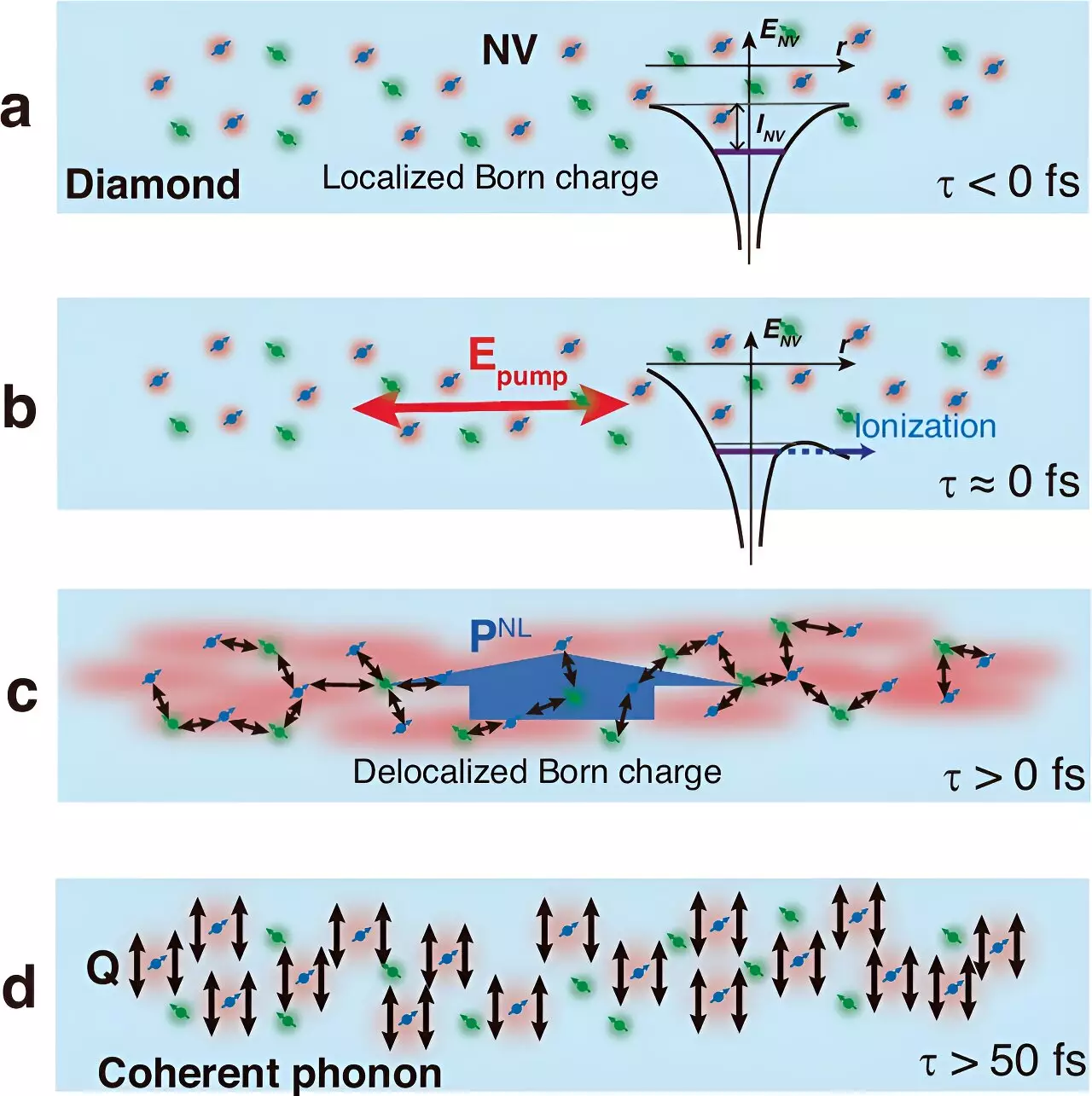In recent explorations of solid-state physics, polaron quasiparticles have emerged as fascinating entities that influence the behavior of electrons in various materials. A study conducted by a research team from the University of Tsukuba investigates the complex interactions between electrons and lattice vibrations, particularly focusing on color centers in diamond crystals. Their findings, which have been published in *Nature Communications*, open up avenues for novel applications in quantum technology, particularly in sensing applications that require high precision.
At the heart of the study lies the nitrogen-vacancy (N-V) center, a specific type of lattice defect that arises when a nitrogen atom serves as an impurity near a carbon vacancy in the diamond lattice. This arrangement not only contributes to the distinct coloration of diamonds but also enhances the diamond’s responsiveness to varying environmental parameters, such as temperature and electromagnetic fields. The unique characteristics of NV centers render them exceptional candidates for developing highly sensitive quantum sensors, capable of detecting minute changes in their surroundings.
The research team adopted an avant-garde approach to explore the interaction between NV centers and lattice vibrations. By fabricating extremely thin nanosheets densely populated with NV centers, they subjected these sheets to ultrashort laser pulses. The subsequent analysis of reflectance changes in the diamond allowed for an examination of the lattice vibrations surrounding the NV centers. Remarkably, the study revealed an approximately 13-fold increase in the amplitude of these vibrations, suggesting that even at lower densities, NV centers significantly enhance the lattice dynamics of the diamond.
A pivotal aspect of the study involved investigating the charge states of the NV centers. Through advanced first-principles calculations, researchers mapped out the distribution of positive and negative charges associated with these centers. Intriguingly, the interaction between these charges and the lattice vibrations facilitated the emergence of polaron quasiparticles, specifically of the Fröhlich type—a form previously thought not to exist within diamonds. This revelation illustrates how quantum behaviors can manifest in unexpected ways, raising questions about the foundational understanding of polarons in crystalline structures.
The implications of the discovery extend beyond mere academic intrigue; they pave the way for innovative advancements in quantum sensing technology. The ability to exploit the unique properties of NV centers and their associated polarons may lead to the development of devices with unparalleled sensitivity and spatial resolution. This research showcases how manipulating the interactions within solid-state systems can lead to groundbreaking applications in fields such as quantum computing, medical imaging, and fundamental physics.
The research from the University of Tsukuba stands as a testament to the profound complexities embedded within materials like diamond. By understanding how polaron quasiparticles interact with lattice structures, scientists are not only expanding the realm of material science but also laying the groundwork for future technological innovations. The journey into the quantum world promises endless possibilities, driven by ongoing discoveries in materials that we may have only begun to understand.


Leave a Reply